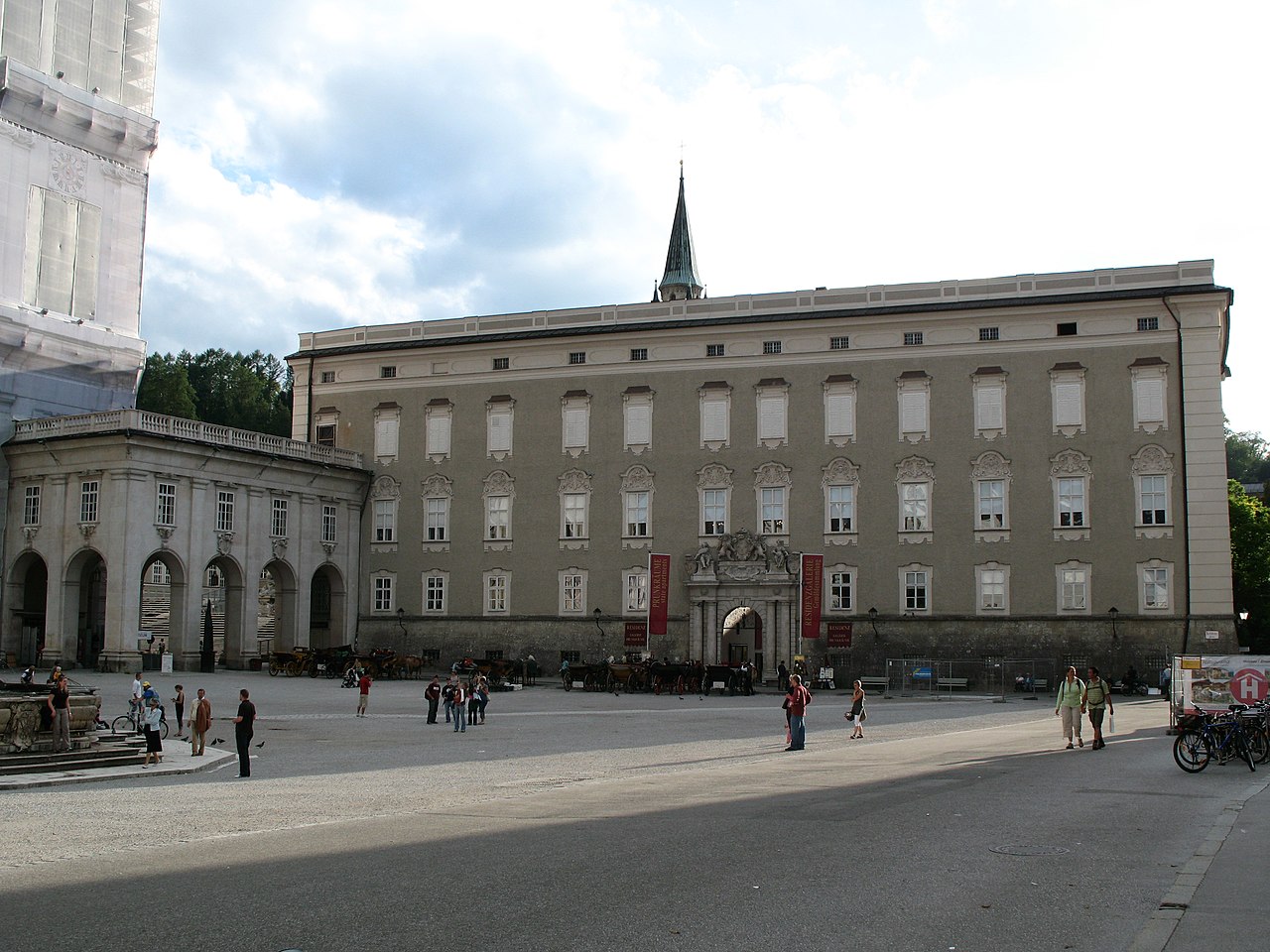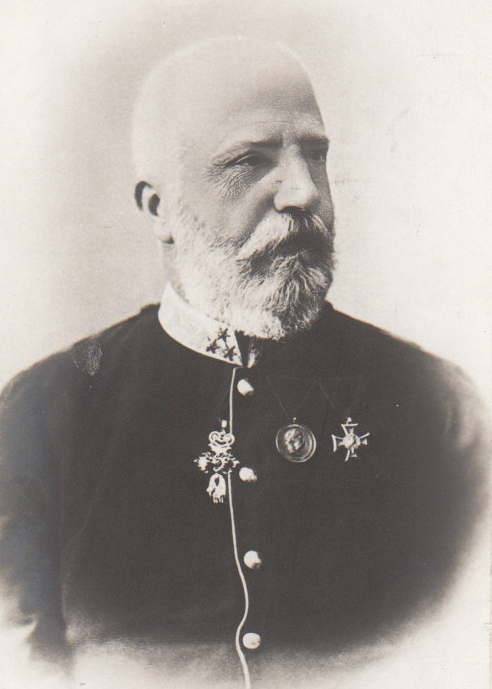by Susan Flantzer
© Unofficial Royalty 2021
The Grand Duchy of Tuscany was located in present-day northwest Italy. It existed, with a few interruptions, from 1569 – 1859. Tuscany was ruled by the de Medici family from 1434–1494 and from 1512 until the extinction of its senior branch in 1737. In 1569, Pope Pius V elevated Tuscany to a Grand Duchy and Cosimo I de’ Medici became its first Grand Duke.
In 1737, the House of Habsburg-Lorraine obtained control of the Grand Duchy of Tuscany. François Étienne, Duke of Lorraine exchanged the Duchy of Lorraine for the Grand Duchy of Tuscany. Stanisław I, the father-in-law of King Louis XV of France, had abdicated the throne of Poland in 1736 and now became the Duke of Lorraine.
Except for a period of thirteen years from 1801 – 1814 during the French Revolutionary Wars and Napoleonic Wars, the House of Habsburg-Lorraine retained the Grand Duchy of Tuscany until Tuscany was annexed to the Kingdom of Sardinia in 1860, as a part of the unification of Italy. In 1861, Vittorio Emanuele II, King of Sardinia was proclaimed the first King of the new, united Kingdom of Italy.
Two Grand Dukes of Tuscany were also Holy Roman Emperors: Francesco II Stefano, Grand Duke of Tuscany (reigned 1737 – 1765) also Franz I, Holy Roman Emperor (reigned 1745 – 1765) and Pietro Leopoldo I, Grand Duke of Tuscany (reigned 1765 – 1790) also Leopold II, Holy Roman Emperor (reigned 1790 – 1792).
********************

Ferdinando IV, Grand Duke of Tuscany: Credit – Wikipedia
Ferdinando IV was the last Grand Duke of Tuscany. Ferdinando Salvatore Maria Giuseppe Giovan Battista Francesco Luigi Gonzaga Raffaello Ranieri Gennaro was born in Florence, Grand Duchy of Tuscany, now in Italy, on June 10, 1835. He was the second of the ten children and the eldest of the five sons of Leopoldo II, Grand Duke of Tuscany and his second wife Maria Antonia of Bourbon-Two Sicilies. Ferdinando’s paternal grandparents were Ferdinando III, Grand Duke of Tuscany, and his first wife Luisa of Naples and Sicily. His maternal grandparents were Francesco I, King of the Two Sicilies and his second wife Maria Isabella of Spain.
Ferdinando had three half-sisters from his father’s first marriage to Maria Anna of Saxony who died from tuberculosis in 1832.
- Archduchess Carolina Auguste of Austria (1822 – 1841), died in her teens
- Archduchess Auguste Ferdinande of Austria (1825 – 1864), married Luitpold, Prince Regent of Bavaria
- Archduchess Maria Maximiliana of Austria (1827 – 1834), died in childhood
Ferdinando had nine siblings:
- Archduchess Maria Isabella of Austria (1834 – 1901), married her maternal uncle Francesco di Paola of Bourbon-Two Sicilies, Count of Trapani, had six children
- Archduchess Maria Teresa of Austria (1836 – 1838), died in childhood
- Archduchess Maria Cristina of Austria (1838 – 1849), died in childhood
- Archduke Karl Salvator of Austria (1839 – 1892), married Maria Immaculata of Bourbon-Two Sicilies, had ten children
- Archduchess Maria Anna of Austria (1840 – 1841), died in infancy
- Archduke Rainer of Austria (1842 – 1844), died in childhood
- Archduchess Maria Luisa of Austria (1845 – 1917), married Karl, Prince of Isenburg, had nine children
- Archduke Ludwig Salvator of Austria (1847 – 1915), unmarried, known for his scientific and regional studies of the Mediterranean region.
- Archduke Johann Salvator of Austria (1852 – reported lost at sea in 1890, officially declared dead in 1911), married opera dancer Ludmilla Stubel, there was speculation of Johann Salvator’s survival under the alias Johann Orth

Princess Anna of Saxony, Ferdinando’s first wife; Credit – Wikipedia
On November 24, 1856, in Dresden, Kingdom of Saxony, now in the German state of Saxony, Ferdinando married Princess Anna of Saxony, daughter of Johann, King of Saxony and Amalie Auguste of Bavaria. Anna gave birth to a daughter in 1858. On February 6, 1859, Anna miscarried a daughter due to typhoid fever. Four days later Anna died at the age of twenty-three. She was buried at the Basilica of San Lorenzo in Florence, Grand Duchy of Tuscany, now in Italy.
Ferdinando and Anna had one surviving daughter:
- Archduchess Maria Antonietta of Austria (1858 – 1883), unmarried
Shortly after Anna’s death, on April 27, 1859, the Grand Ducal family was forced to flee Florence because of the wars caused by the Italian unification movement, and the family took refuge in Austria. On July 21, 1859, Leopoldo II abdicated in favor of his son Ferdinand IV who was Grand Duke of Tuscany in name but never really reigned. Ferdinando was unable to return to Florence to claim his throne, and an elected Tuscan National Assembly formally deposed him on August 16, 1859. Ferdinando hoped to recover his throne because France and Austria had promised to recognize his rights. However, neither France nor Austria was willing to take any steps to bring about his restoration. The Grand Duchy of Tuscany was annexed to the Kingdom of Sardinia in 1860, as a part of the unification of Italy. In 1861, Vittorio Emanuele II, King of Sardinia was proclaimed the first King of the new, united Kingdom of Italy, and Ferdinand’s hopes to reclaim the throne were ended. Ferdinando spent the rest of his life in exile in the Austrian-Hungarian Empire.
Franz Joseph I, Emperor of Austria and Head of the House of Habsburg-Lorraine put some limits on the use of titles and dynastic rights on Ferdinando’s branch of the House of Habsburg-Lorraine. Ferdinando was allowed to keep the grand ducal title as a courtesy but his descendants could only use the title of Archduke or Archduchess of Austria. Only family members born before 1866 could use the title Prince or Princess of Tuscany. In 1870, Ferdinando relinquished all dynastic rights to the former Grand Duchy of Tuscany for himself and his future heirs in favor of his second cousin Emperor Franz Joseph I and his future heirs. Upon Ferdinando’s death in 1908, his descendants were barred from using any Tuscan titles by Imperial decree.

Alicia of Bourbon-Parma, Ferdinando’s second wife; Credit – Wikipedia
On January 11, 1868, at Schloss Frohsdorf (link in German) in Lanzenkirchen, Austria, Ferdinando married Princess Alicia of Bourbon-Parma, daughter of Carlo III, Duke of Parma and Louise Marie Thérèse of France.
Ferdinando and Alicia had ten children:
- Archduke Leopold Ferdinand of Austria (1868 – 1935), renounced his titles in 1902 and took the name Leopold Wölfling, married (1) Wilhelmine Adamovicz, no children, divorced (2) Maria Magdalena Ritter, no children, divorced (3) Klara Hedwig Pawlowski, no children
- Archduchess Louise of Austria (1870 – 1947), married (1) Crown Prince Friedrich August of Saxony (the future King Friedrich August III), had six children, divorced due to a scandal (2) Enrico Toselli, had one son, divorced
- Archduke Giuseppe Ferdinando of Austria (1872 – 1942), married (1) Rosa Kaltenbrunner, no children, divorced (2) Gertrud Tomanek, had two children
- Archduke Peter Ferdinand of Austria (1874 – 1948), married Princess Maria Cristina of Bourbon-Two Sicilies, had four children
- Archduke Heinrich Ferdinand of Austria (1878 – 1969), married Maria Karoline Ludescher, had three children
- Archduchess Anna of Austria (1879 – 1961), married Johannes, Prince of Hohenlohe-Bartenstein, had six children
- Archduchess Margareta of Austria (1881 – 1965), unmarried
- Archduchess Germana of Austria (1884 – 1955), unmarried
- Archduke Robert Ferdinand Salvator (1885 – 1895), died in childhood
- Archduchess Agnes of Austria (1891 – 1945), unmarried

Salzburg Residenz; Credit – By Andrew Bossi – Own work, CC BY-SA 2.5, https://commons.wikimedia.org/w/index.php?curid=2871239
From 1868, Ferdinando and his second wife Alicia lived at the Villa Tuscany in Lindau, Austria during the summer, and during the winter they lived in a wing of the Salzburg Residenz, formerly the residence of the Prince-Archbishops of Salzburg. Both residences were provided by Franz Joseph I, Emperor of Austria.

Ferdinando in 1900; Credit – Wikipedia
Ferdinando died in Salzburg, Austria on January 17, 1908, at the age of 72. He was buried in the Tuscan Vault in the Imperial Crypt at the Capuchin Church in Vienna, Austria. His second wife Alicia survived him by twenty-seven years, dying on January 16, 1935, aged 85, at Schloss Schwertburg (link in German) in Schwertburg, Austria. She was first buried in Schwertburg and in 2007, her remains were reburied in the cemetery of the parish church in St. Gilgen, Austria.
This article is the intellectual property of Unofficial Royalty and is NOT TO BE COPIED, EDITED, OR POSTED IN ANY FORM ON ANOTHER WEBSITE under any circumstances. It is permissible to use a link that directs to Unofficial Royalty.
Grand Duchy of Tuscany Resources at Unofficial Royalty
Works Cited
- De.wikipedia.org. 2021. Ferdinand IV. (Toskana) – Wikipedia. [online] Available at: <https://de.wikipedia.org/wiki/Ferdinand_IV._(Toskana)> [Accessed 28 September 2021].
- En.wikipedia.org. 2021. Ferdinand IV, Grand Duke of Tuscany – Wikipedia. [online] Available at: <https://en.wikipedia.org/wiki/Ferdinand_IV,_Grand_Duke_of_Tuscany> [Accessed 28 September 2021].
- Flantzer, Susan, 2021. Leopoldo II, Grand Duke of Tuscany. [online] Unofficial Royalty. Available at: <https://www.unofficialroyalty.com/leopoldo-ii-grand-duke-of-tuscany/> [Accessed 28 September 2021].
- It.wikipedia.org. 2021. Ferdinando IV di Toscana – Wikipedia. [online] Available at: <https://it.wikipedia.org/wiki/Ferdinando_IV_di_Toscana> [Accessed 28 September 2021].
- Wheatcroft, Andrew, 1995. The Habsburgs. New York: Viking.
- Wilson, Peter, 2016. Heart of Europe – A History of the Holy Roman Empire. Cambridge: Belknap Press of Harvard University Press.
